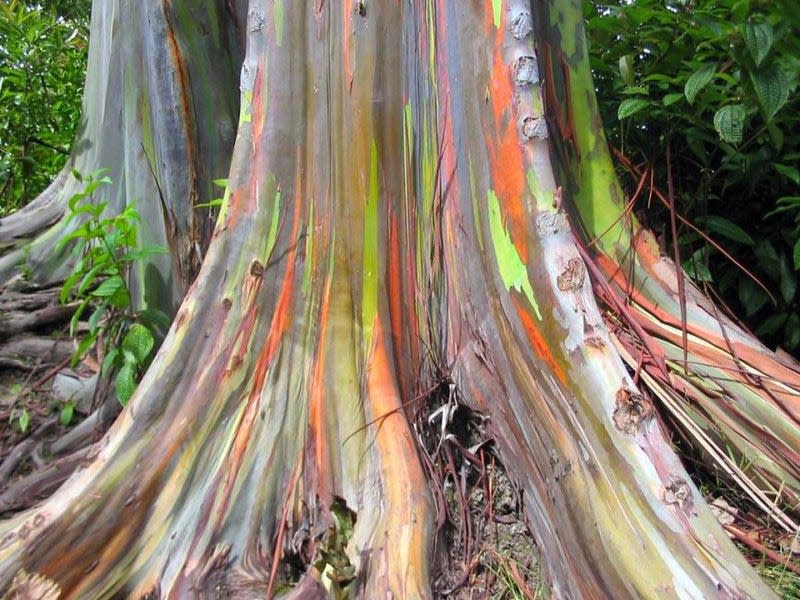Nature's disco ball? Rainbow eucalyptus offers an ever-changing explosion of color

Among the world’s most spectacular trees is rainbow eucalyptus (E. deglupta).
This evergreen, surprisingly cold-hardy native of Indonesia and the Philippines doesn’t boast notable flowers. But it does feature remarkable ever-peeling, ever-changing bark in shades of orange, purple, green, gray and pink.
If that wasn’t enough, trees in the wild can grow up to 250 feet tall. A fast-growing tree that can increase 8 to 10 feet each year in Central Florida, rainbow eucalyptus has an upright growth habit and a relatively narrow crown. For quick shade, two or three specimens can be installed – space permitting – 20 feet apart in full sun.
Although drought tolerant once established, this outstanding tree thrives in lakeside locations and along canals. And – as all Eucalypts seem to be – the rainbow is pest-proof. The flowers I mentioned in passing are small, white and displayed intermittently. Foliage is glossy green and aromatic when crushed. Plants are offered online.
Note: UF/IFAS predicts that rainbow eucalyptus will become invasive in Florida. If they’re correct, I think that would occur only in extreme South Florida, not in our neck of the woods.
Unexpected flowers
Gardeners are excitable folks. I often hear from them when a plant they don’t expect to flower produces blossoms.
In most cases, the plants in question were grown for their foliage, so homeowners are startled when blooms appear. One that often surprises people is Persian shield (Strobilanthes dyerianus), a two- to three-foot herbaceous shrub from Myanmar that features gorgeous purple, green and silver leaves. But small spikes of lavender or white flowers often appear in late summer and fall. These blossoms are usually missed by casual gardeners – until they finally notice them and contact me.
Among other plants with blooms that catch folks off guard are ti plant and devil’s backbone. Some plants, though – such as arrowhead vine (Syngonium podophyllus) – are worthy of attention when they bloom because they rarely flower in cultivation. But arrowhead vine, ubiquitous in South and Central Florida, is considered a pest and shouldn’t be planted.
This week's ClippingsLooking for a tropical trailing plant that thrives indoors? Take a look at these
A gift from Central AmericaSapodillas are beautiful, low maintenance with tasty fruit. They just can't handle cold
Americans tend to embrace sizePlants for gardeners who think big
Chorisia treeFloss silk flaunts cool-season blooms and grows well in Florida
A world of tomatoes out there
Purple, chartreuse, orange, black, white and variegated are tomato colors local gardeners can choose from, with each hue available in different sizes and with different flavors. In addition, some kinds are bushy (determinate), while others are climbing types (indeterminate). In other words, veggie gardeners can really branch out with tomatoes.
Is it too soon to talk about tomato cultivation? No – mid-February often finds avid green-thumbers growing tomatoes in containers or in the ground, with protective frost blankets at the ready.
So if you want to explore options and order seeds of varieties you’ve never tried before, it’s time to get started. To plumb the possibilities, visit The Whole Seed Catalog’s site at www.RareSeeds.com, where you can view 150 varieties of tomatoes. Among the choices are numerous kinds suitable for growing on patios and balconies.
This article originally appeared on The Ledger: Rainbow eucalyptus bark constantly changes its color

